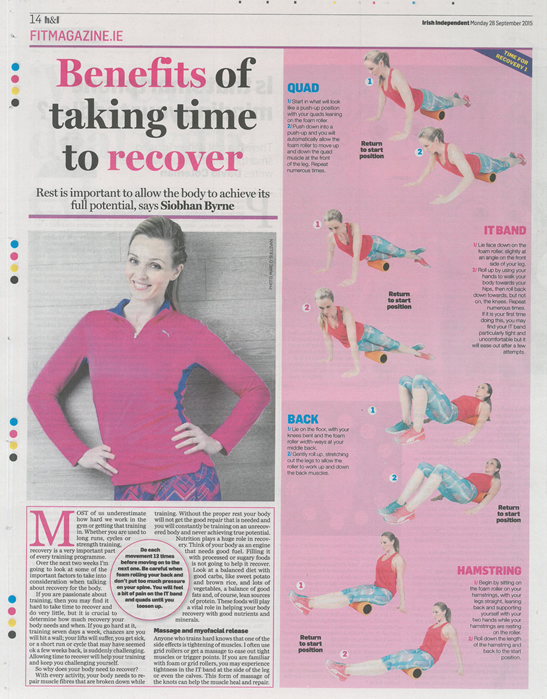Rest is important to allow the body to achieve its full potential.
Most of us underestimate how hard we work in the gym or getting that training in. Whether you are used to long runs, cycles or strength training, recovery is a very important part of every training programme.
Over the next two weeks I’m going to look at some of the important factors to take into consideration when talking about recovery for the body.
If you are passionate about training, then you may find it hard to take time to recover and do very little, but it is crucial to determine how much recovery your body needs and when. If you go hard at it, training seven days a week, chances are you will hit a wall; your lifts will suffer, you get sick, or a short run or cycle that may have seemed ok a few weeks back, is suddenly challenging. Allowing time to recover will help your training and keep you challenging yourself.
With every activity, your body needs to repair muscle fibres that are broken down while training. Without the proper rest your body will not get the good repair that is needed and you will constantly be training on an unrecovered body and never achieving true potential.
Nutrition plays a huge role in recovery. Think of your body as an engine that needs good fuel. Filling it with processed or sugary foods is not going to help it recover. Look at a balanced diet with good carbs, like sweet potato and brown rice, and lots of vegetables, a balance of good fats and, of course, lean sources of protein. These foods will play a vital role in helping your body recovery with good nutrients and minerals.
Massage and myofacial release
Anyone who trains hard knows that one of the side effects is tightening of muscles. I often use grid rollers or get a massage to ease out tight muscles or trigger points. If you are familiar with foam or grid rollers, you may experience tightness in the IT band at the side of the leg or even the calves. This form of massage of the knots can help the muscle heal and repair.
Do each movement 12 times before moving on to the next one. Be careful when foam rolling your back and don’t put too much pressure on your spine. You will feel a bit of pain on the IT band and quads until you loosen up.
Quad
- Start in what will look like a push-up position with your quads leaning on the foam roller.
- Push down into a push-up and you will automatically allow the foam roller to move up and down the quad muscle at the front of the leg. Repeat numerous times.
IT band
- Lie face down on the foam roller, slightly at an angle on the front side of your leg.
- Roll up by using your hands to walk your body towards your hips, then roll back down towards, but not on, the knees. Repeat numerous times.
If it is your first time doing this, you may find your IT band particularly tight and uncomfortable but it will ease out after a few attempts.
Back
- Lie on the floor, with your knees bent and the foam roller width-ways at your middle back.
- Gently roll up, stretching out the legs to allow the roller to work up and down the back muscles.
Hamstring
- Begin by sitting on the foam roller on your hamstrings, with your legs straight, leaning back and supporting yourself with your two hands while your hamstrings are resting on the roller.
- Roll down the length of the hamstring and back to the start position.
